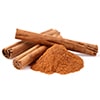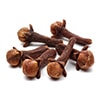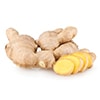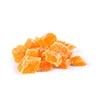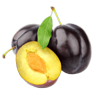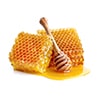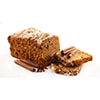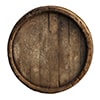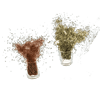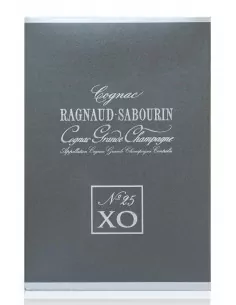
Ragnaud Sabourin Deep Dive
Deep Dive
Ragnaud Sabourin
We are no strangers to Ragnaud Sabourin. Within the region, the house is considered among the absolute top producers of immensely authentic, high quality, supremely elegant Cognacs. Even the region’s other top producers have whispered to us about the inherent quality of Ragnaud Sabourin. So while we may already know the range of Cognacs quite well, we wanted to sit down with Annie Ragnaud Sabourin herself to dive a bit deeper into their family story and history of the house. We touch on topics ranging from the house’s early days, to the period of the world wars, to more general commentary about the big houses, the state of Cognac today, and some of the house’s Cognacs.
If you have not yet tasted a Cognac from this tremendous house, definitely give it some consideration. There is a Cognac in the range for everyone, but rest assured that you are getting arguably the finest that Cognac has to offer. Happy reading.
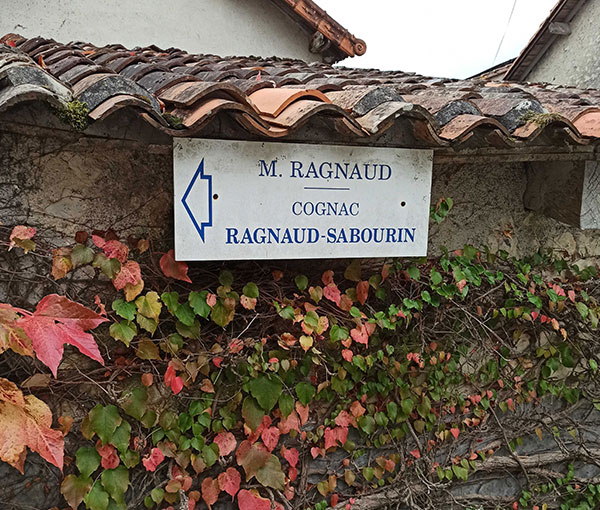
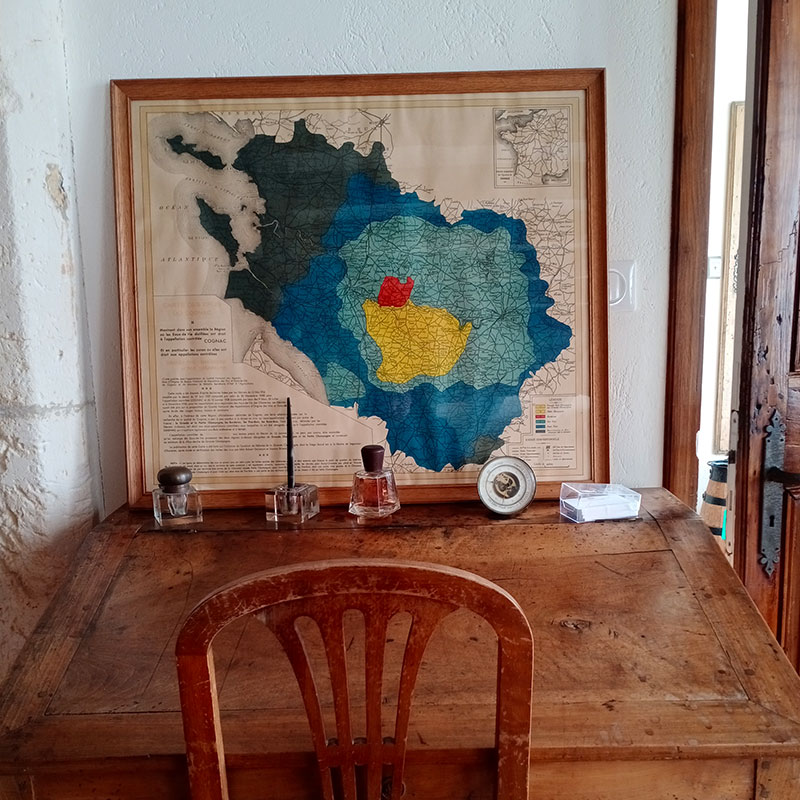
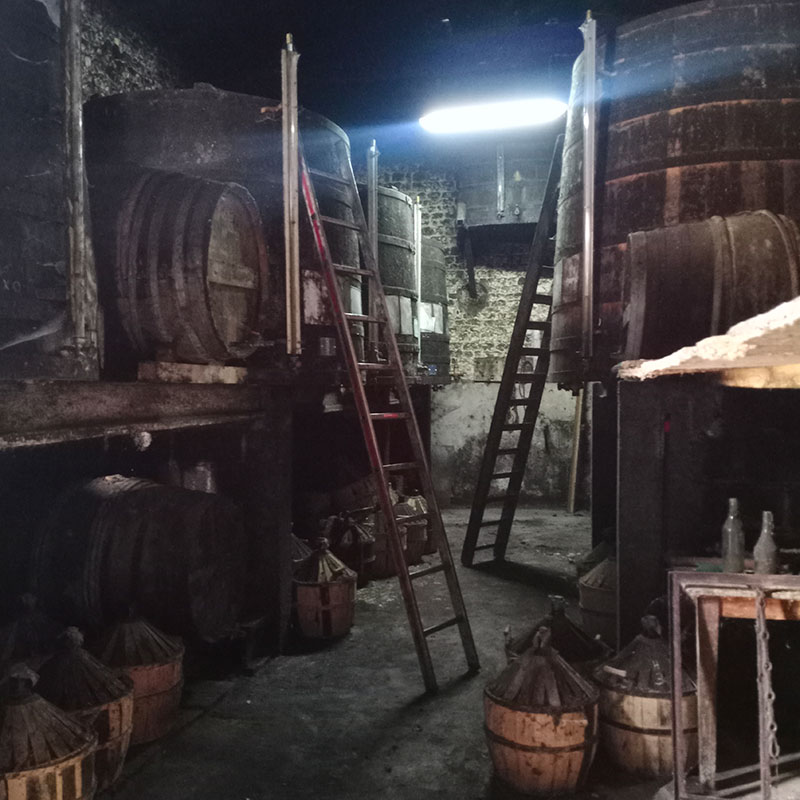
Taylor: So for our customers and our readers, who may not yet know Ragnaud Sabourin and who don't know you particularly, can you introduce yourself and explain what you do at Ragnaud Sabourin?
Madame Ragnaud-Sabourin: I am Annie Ragnaud-Sabourin. I was for many years the director of this Cognac house, given that I was the daughter of Marcel Ragnaud. I’ll explain more a little later, but when my brother passed away, I became the heiress of this house. I had other activities outside of Cognac. I taught at law school in Paris, but I also kept myself very busy with other things. I had a team that was very well put together in the Charente and I came to the estate every week. I worked like this for a long time with great pleasure. We tried to develop this business as my parents had done after the war in 1945. My grandfather already had some connections in the world of Cognac and wine. They introduced us to a lot of international contacts.
Taylor: If I understand correctly, the house was established in 1850. How did the house get its start in the production of Cognac?
Madame Ragnaud-Sabourin: Well, it's a story. I think, like many winegrowers, that is to say that my grandparents and my great grandparents according to the family history, had already had a vineyard, which obviously was impacted by the phylloxera crisis. But like for all winegrowers, at the beginning there were no direct sales by a small Cognac house. Obviously what the winegrower did was he harvested the grapes, he distilled, and at that time he sold his brandies to the established houses in the region. It was Hennessy because my grandfather knew that house very well. So we sold our eaux-de-vie; we were dependent on the big houses. Of course, the winegrowers were the ones who originally set the prices and who did everything. In the region anyway, it's still a bit feudal, there is still a hierarchy. My grandfather continued with this state of mind, but as he circulated around many international congresses, fairs, and expositions, he was often told, “But but you have a very very good Cognac.” So he said that to my father, who was a young wine grower at the time, “Why not try to sell some ourselves?” They already had a few close relationships in that world and that's how direct sales came about. So my father was the first after the war along with a few others to finally say that they could make this successful. They worked a lot, and they did indeed do very well. Because what we do, as you know, is very different from the big houses. We have great respect for those houses; they are formidable locomotives for the region and spirit, but they are not quite the same thing as our small house. For us, we’re on a different and unique shelf, and we see it clearly in the people who are connoisseurs. They completely appreciate the difference, that's for sure.
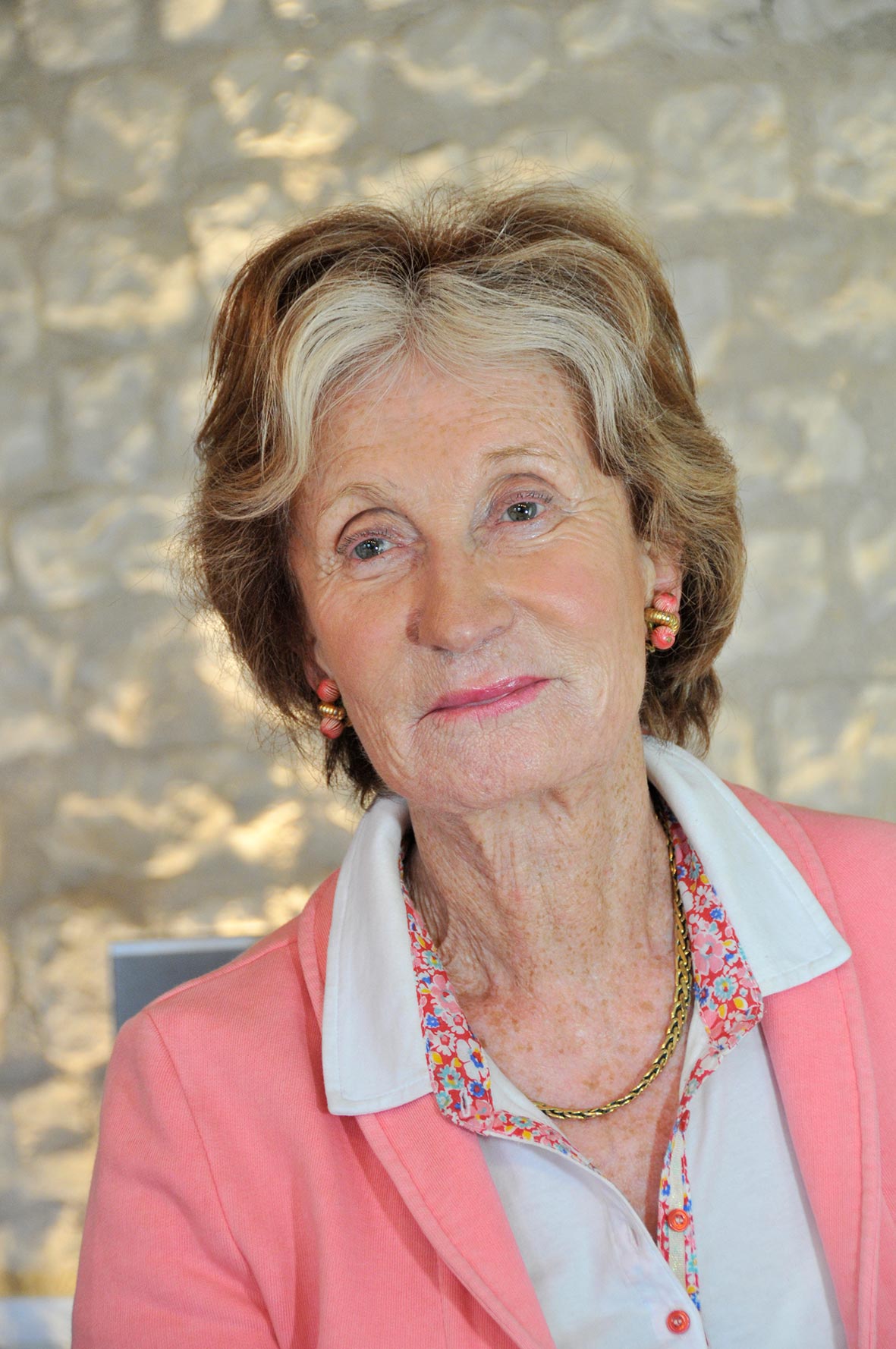

Taylor: Would you say that all, or almost all, of the small houses like Ragnaud Sabourin started this way?
Madame Ragnaud-Sabourin: Each house had to live well, if anything else just to pay the employees. For us, we still had large vineyards which helped up pay the employees; we would have had no money otherwise. So of course we had to sell to the negociants, even if they were the ones eventually setting the prices. Over time things became more equal between the big houses and us small growers, with the help of the Bureau Nationale. But the reality was that for quite some time it was still the trading houses that set the prices. Every year we said to ourselves, “My God, are we going to sell our eaux-de-vie just to pay the costs of the property, and after pay the employees?” Well, we didn't know, but selling to the big houses mainly allowed us to really pay for these property costs. The production costs at the time after the war were lower than now. I knew the Bouillie Bordelaise fungicide, we didn't use all these products back then. Now, all these products cost a fortune. Is it good or bad? I don't know, but it's certain that on the other hand my father harvested 50 to 60 hectoliters of wine per hectare from the harvests, and today we make at least 100 to 110 hectoliters of wine per hectare. That could very well be thanks to what we put into the vines. The yields are there but also the quality too, thankfully.
Taylor: Approximately what year was it that you started really bottling and selling directly?
Madame Ragnaud-Sabourin: As soon as the war ended, my grandfather was close to an American officer who was a soldier during the war. I have to say that I don't remember very well exactly how but I recall that this man came to our estate, he helped launch our Cognacs in the States right away. So early on we had a very very big market in the United States, which we were obviously very proud of. It started like that with that one American, and then it continued, it snowballs a bit and then here we are. The fact that we were perhaps one of the first, along with some of our neighbors who also did very good work, to launch a little into direct sales.
Taylor: Initially, how many hectares on the estate?
Madame Ragnaud-Sabourin: We had 45 hectares. And I made the decision to sell some, which now has been my biggest regret for many years, because I found myself in 2007 with personnel problems. We already had a lot of staffing issues. You know, it wasn't initially my original career path since I was teaching in Paris. Also, my husband was a university professor too. I didn't study agriculture, I didn't do any of that training. I know all this now of course, but I didn't have all the solid foundation, so I found myself in a somewhat difficult situation. So I sold some vines. We now have 36 hectares and that remains my big regret selling those 9 hectares or so. Maybe I didn't know how to manage very well, but anyway, that's the way it is. I really have regrets now, because these labor, or staffing, problems are the same everywhere; it can be quite difficult.
Taylor: And especially today, I hear this quite a lot in many different sectors.
Madame Ragnaud-Sabourin: Yes, it can be complicated. But anyways, now we are much better organized, and we manage to find the right people for all that needs to be done. I tell you, this is still one of my great regrets selling off those hectares.


Taylor: Ok so then and now are the vines located in the same place?
Madame Ragnaud-Sabourin: Yes, everything is within a few kilometers. My parents were both children of wine growers, so there was my mother's family vineyard close by and my father's vineyard which was 4 to 5 km away - but all situated in neighboring communes around the property. This was practical for harvesting, and for all other vineyard work of course.
Taylor: You mentioned two different families. Is the name Ragnaud-Sabourin therefore from the association of these two families?
Madame Ragnaud-Sabourin: Actually, no not at all. My maiden name is Ragnaud, like my parents of course, and I married a Mr. Sabourin. He was my husband. Once my husband and I joined forces, afterwards we created the Ragnaud-Sabourin brand. After many years, he and I separated, but we thought it was good to keep the house name because people started to know Ragnaud-Sabourin. But before then, there was no Ragnaud-Sabourin.
Taylor: So the estate has not always produced Cognac with the name Ragnaud-Sabourin.
Madame Ragnaud-Sabourin: My husband and I were married in 1955, so a few years later we linked the names for the Cognac house in the early 1960s. But before then, everything was made under my father's name which was Marcel Ragnaud.
Taylor: I imagine that in the years when you were winegrowers and distillers there there were not a large number of Cognac brands at that time. Is it right to say you primarily sold wine and spirit to the big houses?
Madame Ragnaud-Sabourin: My father tried to free himself from this bond, or this dependence on the big houses. For me, I continue to sell young eaux-de-vie to Hennessy and Rémy Martin. It is necessary for stability financially. Our problem obviously, as our Cognac production is quite praised, is to find a balance. So do we sell brandies that are a little young or do we keep them to age ourselves? The business is developing a lot thanks to Marine, who is really absolutely exceptional, and we are finding that good balance. We regularly ask ourselves, are we always going to be able to provide? Because that’s the problem, right? Yes.
Taylor: But I find it interesting. I think people need to understand that small houses must sell to large houses because they are the pilots in the region and the small houses still need some cash flow.
Madame Ragnaud-Sabourin: The big houses are and will keep asking for eaux-de-vie. Most of the time it is young eaux-de-vie, and other times it is compte 2 and compte 3 eaux-de-vie. And sometimes if needed, we can offer them some older Cognac. We have always had good relations with the big houses. But I still find the pricing situation with the big houses perhaps a little outdated. But still, we have a good relationship with them and we are in their “livre d’or” that is to say if we regularly offer them eaux-de-vie at a good quality, and we are entitled to certain considerations.
Taylor: I've heard stories before that there are certain producers who have a certain quality bonus because the quality was there and the relationship was strong.
Madame Ragnaud-Sabourin: Well, it's based on quality and the relationship, but there is still a certain preference for some small producers. The big houses are the locomotives and what's more, they help us a lot at the export level. They make Cognac known around the world, so we need to watch them. Armagnac never developed well because of that; they don't have a strong locomotive. I remember being in China and seeing these huge Martell signs. I’ve seen that in the United States too. It's impressive for Cognac.
Taylor: I’m laughing because not long ago, I was in Mexico in a very small village in the middle of nowhere, and I went to a small drinks shop looking for tequila and I saw bottles of Rémy Martin and Hennessy. And then I said to myself Wow, I'm in the middle of nowhere in Mexico and there is the Hennessy VSOP staring right at me.
Madame Ragnaud-Sabourin: In every country in the world. It's a fantastic story.




Taylor: From what you know, how was the cultivation of vines, the distillation, the making of Cognac different in the past compared to today?
Madame Ragnaud-Sabourin: Yes, so first of all, the cultivation of vines, there is a very big difference. As I mentioned earlier, particularly for fertilizers, I was raised with Bouillie Bordelaise. It was great. We used no other fertilizer; that's all we put. We made this fertilizer by hand in the winter. There is a big difference with now where we have these different fertilizers available, we have a lot more fertilizers, some of which are perhaps questionable, but which have a fairly considerable result on the vine, that's for sure.
Taylor: What do you mean exactly?
Madame Ragnaud-Sabourin: Well, since I told you earlier that my father was harvesting the grapes. I think it was around 60 hectoliters of wine per hectare - maximum. Today we can do 100-110 hectoliters of wine per hectare. Back then it was atypical, or even impossible, to do this amount. And its thanks in part to the different fertilizers we can apply to the wines.
Then for distillation, now it's obviously very different because everything is computerized. I knew the time when the distiller slept in the distillery, which was not very good for his health. Because when we had the big vineyard, it was 3 months of constant distillation, that's for sure, and so everything had to be done manually by the distiller. I think he got up every 3 hours. I have not experienced wood heating, but I have experienced coal-heated stills. Coal lasted longer than wood, but it was still every 3 hours that the distiller needed to tend to the still. I always thought it was a bit like raising and watching after a baby. The alambic had to be tended to and loaded with coal, so the distillers didn't sleep much. That's why he always stayed nearby night and day. Now today, I have some younger cousins who are distillers. They are at home watching everything with the computer, they click a button and that’s that. Their presence is not needed night and day. The life of the distiller has changed a lot.
That’s for distillation, but for the actual production of Cognac, I do not see too much difference then versus now. It’s a spirit guided and created by tradition, and we can't ask for better than that.
Taylor: The blends, it’s true, there's no machine or computer for that.
Madame Ragnaud-Sabourin: No. We need someone. I also took distilling classes, but I really admire distillers and I have done a lot of distillation as well with clients. But when I see these professionals, these distillers who have remarkable qualities when it comes to sensing their eaux-de-vie, I am completely admirable. But there are people who are more gifted than others. Distillation really is the best time, smelling the new eaux-de-vie which was 72° off the still. It smelled very good, it was wonderful. It is a magical moment and it’s still the end of the cycle, the distillation. Just talking about the smell of it. The smell comes back to me, it's true.
Taylor: Great. Today, the majority of vines are planted with ugni blanc?
Madame Ragnaud-Sabourin: Yes, exactly.


Taylor: Was this always the case at Ragnaud-Sabourin because I know there is some folle blanche in the blends?
Madame Ragnaud-Sabourin: In our Fontvieille, which is our flagship Cognac, there's colombard. So there's colombard but also some folle blanche. In 2005, we replanted 5 hectares of folle blanche. We are in the process of planting more at the moment, but for a long time we had no folle blanche at all because it is a grape variety that is very fragile, it rots very, very quickly, it has to be harvested immediately and it is very very fragile in comparison to ugni blanc. Myself, and some other producers, had thought about making a single folle blanche Cognac, but we decided against it since we thought it would be better to keep it and use the folle blanche to enhance some of the other blends in the range. I believe that it's very very good. It's a little bit different, it's lighter, and it brings with it a touch of sweetness I believe. The folle blanche is a remarkable grape variety. Returning to a previous question, we see some developments, but they are mostly in the vineyard. And I’m not even talking about machines actually. I have previously experienced all the harvests by hand.
Taylor: So today ugni blanc is the most important, but you're going to keep an important place for the folle blanche?
Madame Ragnaud-Sabourin: Absolutely.
Taylor: How was Cognac Ragnaud-Sabourinwas impacted by the phylloxera crisis, and how did the house recover and how long did it take?
Madame Ragnaud-Sabourin: My grandfather was born in 1880, my grandmother in 1888, so they were born at the time of the Phylloxera outbreak. I've always been told that obviously it was a terrible period. In the countryside in those days we had a lot of staff and horses. We had maybe ten people and I was always told that my grandfather and my great grandfather told the staff listen my dear friends you can return home to work. He could not pay them because he had nothing - no income at all during the crisis. But in the countryside, we live with our garden, with these poultry and whatever else is raised on the property, and so on. We were not unhappy in the countryside then, but told them you do what they want, they could feel free to stay or to leave. And everyone stayed because there were no other places to go to find work. So we kept a great family spirit. We waited quietly; we replanted the vineyard, and eventually got some more eaux-de-vie that my grandfather made. We did not bring those brandies to market, but instead gave a few small bottles to people who knew them and appreciated them from time to time. This must have been around 1904 - late 19th century or early 20th century. That we had to replant like everyone else.
It was quite a dramatic time: the end of the war in 1870 followed by the phylloxera crisis. Then we lived entirely off the property with the family and those workers who chose to stay on the property.
Taylor: Two big events which had a huge impact on the region.
Madame Ragnaud-Sabourin: Exactly, yes.
Taylor: If we move on to the subject of war, what were the impacts during the First and Second World Wars?
Madame Ragnaud-Sabourin: This is very interesting because I experienced the 2nd war. We obviously had trouble selling eaux-de-vie. And at the time, as I told you earlier, we only sold to the big trading houses. At that time we did not have any direct sales. For us, it was Hennessy. My grandfather Gaston Briand, who was a very well-known gentleman in the region, had a very close relationship with the Hennessy house. That’s why we were not so bad off. That relationship had always been pretty well nurtured I think. We always had quality eaux-de-vie to sell them. We showed great loyalty to Hennessy and they always showed great loyalty to us. For example, there was no question of selling elsewhere. If they needed eaux-de-vie, we were always prepared to respond positively. Of course we were also in their “livre d’or” so that helped.
Ultimately, I think it was thanks to the relationships my grandfather had that we managed to live well during that period.


Taylor: So, even if it was more complicated to sell, since the bond was very strong between you and Hennessy, you came out ok?
Madame Ragnaud-Sabourin: I believe so yes.
Taylor: And these close ties to Hennessy, was that during the first or second world war?
Madame Ragnaud-Sabourin: During both wars and even in between. My grandfather was in the first world war of course. I unfortunately don't know much about what happened to the house during the First World War. I know that my grandmother remained with the agricultural workers who were older and who had not been mobilized. We had lots of horses that were very utile around the property. We were certainly distilling at that time, and I think there always remained a small demand for eaux-de-vie, although overall it was a period of scarcity. But you know, I have not been told in my family about this difficult period. You know, the Charentais are quite discreet people. We don't talk, we don't tell much.
Taylor: How did the house recover after the turbulent period of the 2nd World War?
Madame Ragnaud-Sabourin: Yes, so in 1945, we met an American officer, a great amateur de Cognac. I'm not sure how he found our house, but I knew him for a long time, I remember him very well. I put him in touch with my grandfather, and this officer eventually introduced us to the United States, which was quite rare in the region. And we had a very big market in the United States for a very long time. There was already demand in the United States for Cognac, but for something that was a little bit different from the big houses.
Taylor: So this is when direct sales started for the house.
Madame Ragnaud-Sabourin: After the 2nd World War, yes, things really started to develop thanks to the officer mentioned previously but also the big effort from my parents. The family was really involved. My grandfather said that he has a son-in-law who is a wine grower, with a beautiful vineyard just next door and that he would certainly be happy to market the products. We had representatives in Paris and most parts of France. Early on it was my mother who handled the invoices and the admin side. And then we took on someone part-time and then full-time. But yes the family members were each involved in the early days of these direct sales.
Taylor: I have already heard that for some houses, they lost a lot or almost all of their eaux-de-vie that were in barrels or a dame jeanne at that time of the 2nd World War. Was this the case for Ragnaud Sabourin?
Madame Ragnaud-Sabourin: Not exactly. It's actually quite a story that we tell - a true story. We were a bit lucky. During the war we were occupied by the Germans for 3-4 years. Consequently, Germans were quite present in the region. They had all the rights. They regularly came to make requisitions, eventually including to take Cognac. At least in the beginning, they came to our home to collect eggs, chickens, and other things like that. That was the rule for those types of goods; the eaux-de-vie were not initially concerned luckily, unlike say in Armagnac which was mostly pillaged. There was a certain German officer named who led much of the occupation in the Cognac region. But his family, his father in particular and his grandfather, had been the representatives of a large negociant Cognac house for Germany. I think it was Martell. So he understood the problem in the region very well: If we let the troops go to each house, they would take all the Cognac as the Germans were very fond of alcohol. All the stock would be gone, that's for sure. So he managed to reach an agreement with my grandfather. That is to say we gave up the young eaux-de-vie to the Germans. That was normal and agreed upon. But the old eaux-de-vie would go untouched. This helps explain why we have the paradis cellar we have today, with eaux-de-vie from the end of the 19th and beginning of the 20th century.
We still have quite a bit of those old eaux-de-vie. In this regard, we got lucky during that period to be able to preserve these old eaux-de-vie, which are absolute treasures.



Taylor: Changing the theme a little bit: the house has always had a strong feminine presence in all aspects of its production. Can you tell us about this?
Madame Ragnaud-Sabourin: Yes, of course but I have to say that it's a bit of a coincidence. There were my parents and my grandparents living together in the countryside. I had a brother, who was going to business school and who could have worked for the house, but he passed away after a bad motorcycle accident in a small village. So it was me who was obviously present at the estate. So as I said, it's a bit of a coincidence. Of course, my parents led the house, and of course, I was there regularly until eventually I became in charge. While I was working as the manager, my daughter came to work with us from a commercial point of view. She moved around a lot; she was practically bilingual, which was not exactly the case with me. So she circulated a lot and was there to work alongside my mother after the death of my father. My father eventually became removed from the house because he had some health problems. So my daughter and I worked alongside my mother. When things really started to develop we had of course many journalists who came by because we were a bit of an exceptional case being led entirely by women. But honestly, it was a bit of a coincidence.
You know a very interesting book was recently published on the Women of Cognac. All these young women who have responsibilities with important Cognac houses. I assure you that the interviews we have done for this book are really amazing. These women have done a lot, often they have lived abroad, and they are very determined.
Taylor: I did indeed see this book release not too long ago. Great!
Madame Ragnaud-Sabourin: We definitely see the evolution in the region. Considering ourselves, it was a little bit the result of coincidence, but we tried to stay the course and to maintain and grow the house. My mother for a very long time was present. She always enjoyed tasting and she was very strong at it. She always had something to say. You know, she died at 100, and until the end of her life she still had an active role in the house.
Taylor: Even if Ragnaud Sabourin was a small house, it had quite a reputation in the region due to its strong link with Hennessy and since it was managed by women.
Madame Ragnaud-Sabourin: Yes, we had a very great reputation. We had journalists and small videos were made, which were always amusing because we were a little apart.


Taylor: Were there any difficulties, or certain tensions, at the beginning being a woman at the head of a highly reputable Cognac house?
Madame Ragnaud-Sabourin: I have thought about this a lot, and honestly no, because we were selling. We sold regularly and we always had that very good relationship with the big negociant houses. And what's more, from a business point of view, women are generally good salespeople. So we didn't have much of these problems being young women. There were indeed more responsibilities because I had to manage the team which came from my grandparents and from my parents - a complete team. We had an accountant and we had a woman who was the daughter of one of our farm workers who was the secretary. She knew all the customers. When the customers called, she recognized each and every one of them on the phone. So we had a very good team that’s for sure. So from my perspective we did not have many difficulties. I always enjoyed when I went to meetings with Hennessy. Everyone was very respectful and charming. Sure, the scene was a little misogynistic of course, but above all it was the reputation of the house and it was the high quality that served us well. It was always very respectful and friendly.
Taylor: Cognac and its crus have the AOC status. Can you comment on the positive and negative points of such an appellation status? It's a broad question, but there are other spirit categories which don't have this notion of appellation at all so it is interesting.
Madame Ragnaud-Sabourin: My grandfather had been one of the people to help with the delimitation of crus. Appellation status is an advantage and above all a protection. It was at that time, between the two wars, that the whole wine world was restructured, which had not been the case before. So I think it offers more of a protection. In my family we had a very great respect for all of the other crus, even though we did feel a little protected being in the Grande Champagne. The Grande Champagne is the premier cru, so in principle it’s better, but it really comes from the soil, which has much more limestone, or chalk, than the other crus.
Taylor: Are there negative sides that make things a little complicated having this appellation system?
Madame Ragnaud-Sabourin: It makes things a little more complicated, but I think it's like that in all professions that have a similar appellation or protected status.
Taylor: So at the administrative level?
Madame Ragnaud-Sabourin: Exactly, this is at the administrative level, like everywhere I think.
Taylor: But the goal in general is, it's a good thing. It’s noble to protect Cognac and its crus?
Madame Ragnaud-Sabourin: Maybe other people wouldn't think so, but it seems to me yes. We have always had great respect for the appellation Cognac and its crus, and the requirements it entails. Although sure, winegrowers tend to not really like too many obligations.
Taylor: Does the notion of terroir apply in the Cognac region?
Madame Ragnaud-Sabourin: It does of course, but I don't have the impression that we talk enough about terroir in Cognac. We talk about it a lot more for wine. It’s not said enough in Cognac.
Taylor: Do you think that the terroir should be discussed and explored more in Cognac?
Madame Ragnaud-Sabourin: We have the classification of crus which is exactly what our terroir is. But we bizarrely wouldn't say terroir, we'd tend to just say cru. Whenever I had clients that we received, we would say that we are lucky to be in the premier cru. Everyone understood, I showed cru maps which of course show the terroir, even if we only mentioned cru. As I said before, it gets talked about a lot with wine, but we use the term cru in Cognac. Not a lot is said about actual terroir.


Taylor: And for you, does the Grande Champagne indeed make the best Cognac?
Madame Ragnaud-Sabourin: So that's a very interesting question. Well, it's the premier cru, and it's very good, but there are other crus. My father always taught me that what we have in the Grande Champagne are eaux-de-vie that are capable of aging very well and for a very long time. So in that regard they can be considered better when compared to other crus when the eaux-de-vie are old. But the Borderies also makes excellent eaux-de-vie, in addition to the other crus, even if the Borderies stands out for me. Other crus are better young. The Grande Champagne is not better with its young qualities up to say 10 years. From 10 years and onwards at that time I believe that the difference starts to arrive and that the eaux-de-vie of the Grande Champagne are better. We have experts who often come to the domaine. When we receive them at our small house, they come because they know how wonderful our old eaux-de-vie are. We were lucky to be able to keep these old Cognacs, not to sell them but to be able to keep them. And there I believe that it is in the category of truly old Cognac, where we find incomparable things in the Grande Champagne.
Taylor: I hear this conversation especially in the group of spirits lovers. They say, in wine, there is a real terroir aspect, but in Cognac there isn’t because the terroir aspect gets erased during distillation.
Madame Ragnaud-Sabourin: I think that there is an aspect of terroir with Cognac. From what I understood when I did training on distillation, there are as many factors that go into making eaux-de-vie as there are in making wine. But it's not all the same.
They are different worlds, or rather worlds that respect each other but are different. You know the Charentais are very reserved people. You've seen the big gates that we have in the region, which is not the case with us, but there are lots of big gates in the region. We are a little bit withdrawn; there is a kind of secret to the product that we make and sell, which is completely different from wine, which is made and sold right away. Wine is sold after 1 to 2 years. For Cognac, we wait.
Taylor: What do you think is the philosophy at Ragnaud Sabourin? If there is a philosophy.
Madame Ragnaud-Sabourin: I would definitely say tradition. A little bit like everyone else, right? You know now I see plenty of people who are seeking to innovate, particularly from a packaging point of view. It’s true that you can now see bottles and things that we’ve never really seen before. But that's not at all our philosophy for the moment. We are classic. I would not say we are afraid of new trends, but we're working in the long term - in tradition. It’s a wonderful opportunity to have a product which is excellent and which should be kept that way. So we strive to keep things as they are and to not do too much.
Taylor: Ok so tradition above all.
Madame Ragnaud-Sabourin: I think tradition for the aging of Cognac, for the culture of Cognac, for everything really. This is the same tradition which has proven itself over time. There may be an evolution among the young generations arriving in Cognac. In Cognac there are certainly a lot of young women, from different backgrounds, who certainly now have a clear philosophy and vision, maybe a little different than ours. But for us at the moment we are still following tradition.


Taylor: How would you describe Cognac made at the domaine today? Are the Cognacs today like they were 20, 30 years ago?
Madame Ragnaud-Sabourin: The eaux-de-vie are still ours like they’ve always been. The fact that they all come from the premier cru, means they are eaux-de-vie which are powerful. But to me powerful doesn't mean strong. Particularly in the old qualities, the power of the eaux-de-vie is compensated by a softness that comes with age. And the aging gives rise to what we call the rancio charentais. In our flagship Cognac for example, the Fontvieille N°35, we see this. It’s 35 years old, it’s 43% alcohol, it’s got power, but it's also beautifully round. It's curious, experts and amateurs alike say, it's an eaux-de-vie which is round despite having great power. It gives an impression of softness.
Taylor: Soft really is the word that comes to mind. When I visited the domaine I was able to taste the whole range, and all the Cognacs had a mouthfeel that I can only describe as soft.
Madame Ragnaud-Sabourin: Exactly. It’s a spirit so it’s got power but it’s soft and round.
That’s it and that’s what I believe to be extraordinary. We have a lot of people coming, some who do not know much about Cognac and others who are very experienced with Cognac, and our Cognacs, particularly the older qualities give that impression. A lot of work goes into getting this result. The eaux-de-vie are accompanied and aged well. The barrels are looked after and changed when necessary. Aging really is a lot of work. Once in the bottle, the Cognac won’t move anymore, but before then the eaux-de-vie is developing under our care in our special cellar conditions with just the right amount of humidity. The evaporation throughout the aging process is important and the chai contributes to this.
Taylor: If you had to describe the personality of each cognac in the range in one word, what would you say?
Madame Ragnaud-Sabourin: In all humility, I do not consider myself to be a good enough taster. I'll tell you an anecdote. Even when I was living in Paris, I came back to Charente all the time. I had formal training on distillation. My father was the cellar master. He began at 20 years old, but he did not know much about the job or have the tasting experience at that time. He made himself taste ten different eaux-de-vie every morning all the way until towards the end of his life when he stopped tasting. For him that was the only way for him to train his nose and palate to be able to create the blends he did. But he said to me that I could confuse myself by doing exactly as he did. Instead, he told me to focus only on 2 qualities, which were the VSOP and the Fontvieille N°35 for me, that I would basically memorize. I only drank those Cognacs, which means for those, I recognize them easily and for others not always. It’s quite a considerable job to be able to taste well. I think it’s a skill we have to know but also that there are people who are more gifted than others when it comes to tasting. It’s kind of like cooking: some have it, others it takes some more time.
Taylor: Interesting. So, for you, the VSOP and the Fontevieille are your darling (chouchou in French) Cognacs as you know them very well.
Madame Ragnaud-Sabourin: Especially the Fontevieille, yes. It's a shame that it’s a little hard for some people to pronounce, especially our American friends, so we often just hear people call it “the 35”. But it’s true, it’s our star.
Taylor: There is a new XXO in the range. What was the motivation for launching the XXO?
Madame Ragnaud-Sabourin: Frankly, I would love to tell you, but you’ll have to ask Marine and my son who is the manager now for the exact motivation for the XXO. When I was actively managing the domaine, I did not bring in any new qualities - I kept moving forward with what we had in the range.
But I knew that there was this new quality that I was offered to taste, that I found very good but it is quite limited in quantity. It was a very good idea, but I’m not really aware what the exact mobilization was. I was very happy with the result though.
Taylor: If anyone comes along and wants to discover Ragnaud Sabourin, with which Cognac should he or she start the journey?
Madame Ragnaud-Sabourin: Well, I think that the start of the range with the VSOP is a really good choice. I think it's good because it's a VSOP that is 10 to 12 years old - and so already an XO. This really is a very good aperitif Cognac too; I regularly enjoy it with friends with an ice cube.
Taylor: It really is a nice VSOP.
I’m interested to get your perspective about Cognac consumption in France. It is recognized that Cognac consumption in France is relatively low compared to other brown spirits. Why do you think this is the case? For example, whiskey and rum seem to have the upper hand in France.
Madame Ragnaud-Sabourin: Cognac has of course declined compared to whisky. I say this with a certain pride, but Cognac is still Cognac. There are people all over the world who still think that Cognac is the best brown spirit with the best know-how.
It’s incredible though. I see young people now starting to drink Cognac. It's a bit fashionable to also make Cognac as an aperitif, which works well. There are even a lot of restaurants that now offer these Cognac qualities that go with the cocktails. I don’t know why but Cognac’s always had the old-fashioned image of grandpa’s Cognac as a digestif. So in France, Cognac as aperitif is gaining, more than an after dinner digestif, since we drive cars more these days. But in the past we always drank Cognac as a digestif. It was something very important, it's true and it has declined. It’s a bit of who we are in Cognac.
And frankly, I don't think whiskey is good, even with a few ice cubes. Cognac, unlike whiskey, can show terroir. In my opinion Cognac is on the right track, that's saying a lot but we shouldn't lose any more traction to whiskey or other brown spirits.


Taylor: Here’s a question about the big houses. What is the central role of the great house in the Cognac region today? And even in the past, and for the future?
Madame Ragnaud-Sabourin: They are absolutely essential locomotives, but they can be criticized a little. These big houses know how to sell, which has allowed us to develop Cognac around the world. We can actually criticize them for the winegrower perspective, there is always a little bit of this side. We depend on them, just as they depend on us, but the relationship has always been one where the winegrower has to accommodate the big houses. I still believe that everyone now will continue as is, even the young winegrowers because they can't live only from direct sales when you have a large vineyard. I don't really know if too much is possible, but you would have to sell a lot in direct sales. It's like anything else: you have to find a balance in the production. We need to know what we want to keep and what we want to sell.
Taylor: Have the big houses made any errors, or perhaps have they done things in a less than ideal way?
Madame Ragnaud-Sabourin: With regard to viticulture, it's the big houses who made us survive for a long time. It was essential. For us, as we have always had good relationships with them, provided that we give them a certain loyalty, which gives us a little freedom. But I think that I don't have a clear vision on the subject, so I can’t say if they made any mistakes from a business perspective or from a global perspective. I think above all that they have helped develop us and Cognac a lot.
Taylor: That’s quite a good thing, and maybe not mentioned enough.
Madame Ragnaud-Sabourin: There are the 4 big houses, but then there are plenty of others who do things which do not necessarily harm us, but whose quality is not great. It's good for us, we stand out for our quality.
Taylor: What path do you want to see Cognac take in the future?
Madame Ragnaud-Sabourin: I think Cognac is on the good track. There is still a very strong recognition for Cognac, a recognition of a very quality eau-de-vie that is very authentic. Cognac is very authentic and that has not changed over time. People more than ever are searching for quality. In food we see this with all these gastronomic people looking for sought after ingredients of the highest quality. I experienced the developments from large grocery store distribution, which I find fantastic, but it is not necessarily quality. Go to Paris now and look at the number of small shops that sit next to each other. Even in our small rural villages, there are small shops that have so much more to offer compared to the grande distribution in terms of quality and authentic products. But practically for everything that is food, people want authentic things and there is a lot of research for that. So for Cognac I believe that we have every reason for hope. It is a product that is of high quality, authentic, and it is a product that knows how to develop. You may have to try drinking it in different ways, like in cocktails, but Cognac the digestif will always be there too.
And so I’ll always qualify Cognac as something that is quite exceptional.

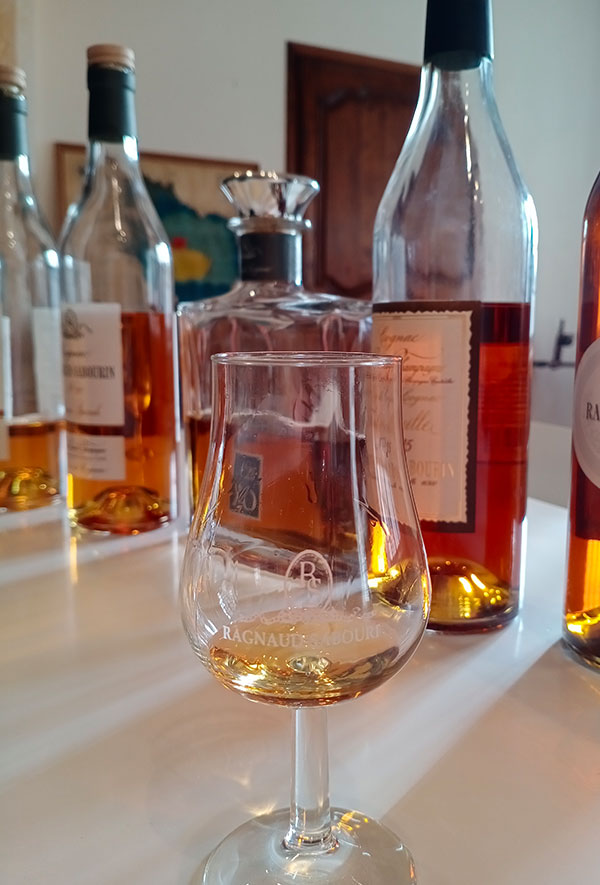
Taylor: Last question, maybe a bit of a unique question. Imagine you're on a desert island? You can only take a book and a bottle of Cognac. What do you take?
Madame Ragnaud-Sabourin: I thought about this one a lot. The Fontvieille N°35 for the bottle. And for the book, I think it would be One Hundred Years of Solitude by Gabriel Garcia Marquez. I find this book extraordinary because of its originality. I have read it a lot of times already.
Taylor: It is a book that can be reread and always provide a new journey each time.
Madame Ragnaud-Sabourin: Certainly.
Taylor: And for the Cognac, I think you made a nice choice with the 35.
Madame Ragnaud-Sabourin: I recognize this Cognac well. The first sip requires a little thought, but afterward it is very, very easy to drink. I always come back to this, it's round and it's something that stays for a long time in the mouth. That's really the difference between Cognac and wine, so it's not better than wine but it's certainly different. Although wine does go quite well with food. We’ve tried organizing some meals to pair food and Cognac, but for me it just does not work as well as wine. Bur as a digestif, nothing is better than Cognac, and it goes very very well with coffee.
Taylor: I could go on all day, but I suppose we should stop there. Well, I’d like to thank you for your time and the responses to my questions.
Madame Ragnaud-Sabourin: It always makes me happy, especially to share a little about the family history.
Taylor: That was indeed a goal of this interview, so again thanks.
Madame Ragnaud-Sabourin: You know, now that I have some more time, I would like to write a little bit on the history of the family and of the house. There are people and stories that should be heard, who might not be remembered after me, so I would like to write a little on the family and history.
Taylor: Great. We’ll look forward to reading it when the time comes.
Madame Ragnaud-Sabourin: Thank you and my pleasure.
Grande Champagne at its best
Ragnaud Sabourin Cognacs
Ragnaud Sabourin XXO Cognac
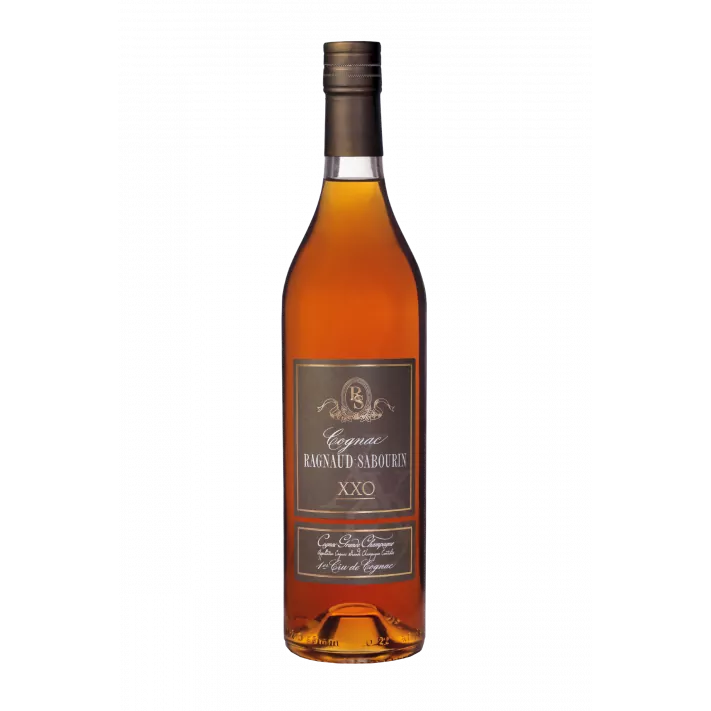
Ragnaud Sabourin XXO Cognac
Reviews (4)
Great XXO Cognac - Ragnaud Sabourin
A complex nose with notes of fine pastry, sweet ripe fruits, candies, honey. On the palate also sweetness from candied fruits, honey, vanilla and perfectly integrated alcohol. This cognac has a long and elegant finish on fresh, sweet, juicy fruits.
Ragnaud Sabourin XXO Cognac
Nose: On first pour there is a sharp spirit note. This suggests a youthful freshness, despite the fact that this is not a young Cognac. With air, the spirity note blows off and is replaced by a pretty florality and soft fruit candies. Sweet citrus. Fresh cake with a high quality icing or glaze; there...
- Cognac age
- XXO
- Growth area
- Grande Champagne
- Bottle size
- 700ml
- ABV
- 40%
- Grape Varieties
- Ugni Blanc, Folle Blanche
Nose: Initially, the nose presents a rich tapestry of sweet aromas, where candied citrus fruits intermingle with spices, cloves, and cinnamon. Upon swirling, it unfolds subtly woody and toasted nuances, enriched with honey and prune, deepening the aromatic complexity. The finale is marked by a distinct note of rancio, extending the richness of an already multifaceted bouquet.
Palate: A round and complex character, starting with a slightly sweet and concentrated expression. Aromas of candied fruit, spices, and honey, now seamlessly integrated with woody undertones. The result is a tasting experience that is both profound and encompassing.
Finish: Exceptionally long, leaving an indelible impression with notes of toasted gingerbread. Here, the rancio note blends harmoniously with woody flavors, culminating in a finale that is both elegant and deeply satisfying.
Read more about Ragnaud Sabourin XXO Cognac















